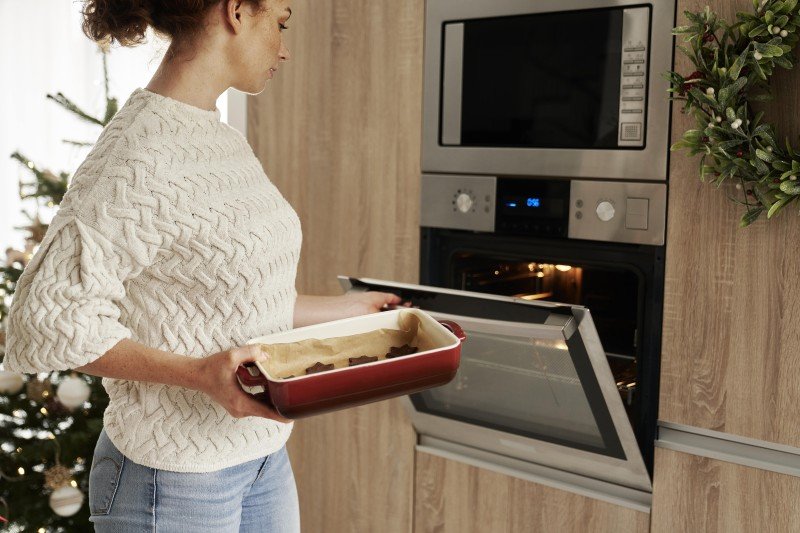Understanding Hobs and Ovens: The Essential Kitchen Appliances
In the realm of kitchen home appliances, couple of products are as essential as hobs and ovens. These devices form the foundation of culinary activities, allowing individuals to develop everything from simple meals to elaborate feasts. Understanding the differences, types, and performances of hobs and ovens can substantially boost one's cooking experience. Buy Oven Online digs into the intricacies of hobs and ovens, providing insights that deal with both beginner and seasoned cooks.
What Is a Hob?
A hob, typically described as a cooktop or stove top, is the flat surface area on which pots and pans are positioned for cooking. Hobs are equipped with heating aspects that generate the needed heat for cooking food. They can be found in different forms, consisting of gas, electric, induction, and ceramic alternatives. Each type offers unique benefits and downsides.
Types of Hobs
Gas Hobs:
- Heat Source: Natural gas or propane.
- Advantages: Instant heat control and responsiveness, chosen by many chefs for exact cooking.
- Drawbacks: Requires a gas connection and can be less energy-efficient.
Electric Hobs:
- Heat Source: Electric coils or smooth glass-ceramic surfaces.
- Benefits: Generally easier to clean up, even heating, and extensively offered.
- Downsides: Slower to warm up and cool off compared to gas.
Induction Hobs:
- Heat Source: Electromagnetic currents.
- Advantages: Quick heating, energy-efficient, and only heats the pots and pans, not the surrounding surface area.
- Drawbacks: Requires compatible pots and pans (ferrous products).
Ceramic Hobs:
- Heat Source: Electric and has a smooth glass surface area.
- Advantages: Sleek look, easy to clean, and even heating.
- Drawbacks: Can take longer to warm up and cool off.
What Is an Oven?
An oven is an enclosed appliance that cooks food by surrounding it with dry heat. Ovens can be standalone units or integrated with hobs in a single device called a variety. Ovens are flexible tools that can be utilized for baking, roasting, broiling, and more.
Kinds of Ovens
Conventional Ovens:
- Heat Source: Electric or gas.
- Benefits: Good for standard baking and roasting.
- Drawbacks: Can have irregular heat distribution.
Convection Ovens:
- Heat Source: Electric or gas with a fan for circulating air.
- Advantages: More even cooking and much faster cooking times due to air flow.
- Downsides: Can be more expensive and may require changes in cooking times.
Microwave Ovens:
- Heat Source: Microwaves.
- Advantages: Quick cooking and reheating; great for thawing.
- Downsides: Can not brown or crisp food well.
Steam Ovens:
- Heat Source: Steam generation.
- Advantages: Retains nutrients and wetness in food, much healthier cooking choice.
- Disadvantages: Longer cooking times and normally greater expense.
Secret Differences Between Hobs and Ovens
While hobs and ovens serve the primary function of cooking food, their performances and utilizes differ substantially. The following table sums up these essential differences:
| Feature | Hob | Oven |
|---|---|---|
| Cooking Method | Direct heat | Enclosed heat |
| Primary Use | Boiling, sautéing, frying | Baking, roasting |
| Heat Source | Gas, electric, induction | Gas, electric, steam |
| Cooking Area | Flat surface area | Enclosed area |
| Cooking Time | Usually faster | Varies based on dish |
| Control & & Precision | Immediate and direct | Depend on settings and timers |
Benefits of Using Hobs and Ovens Together
Integrating making use of a hob and an oven can significantly improve the cooking procedure. Here are some benefits:
- Versatility: Different kinds of food can be cooked all at once.
- Performance: Using both permits various cooking strategies, such as searing on the hob and baking in the oven.
- Time-Saving: Multi-tasking can significantly reduce general cooking time.
Upkeep and Care
To make sure the durability of hobs and ovens, routine upkeep is important. Here are some tips:
For Hobs:
- Clean spills immediately to prevent staining.
- Usage suitable cleaners for particular materials (e.g., ceramic cleaner for glass-ceramic hobs).
- Regularly inspect gas connections for leakages (for gas hobs).
For Ovens:
- Wipe down the interior after each usage to avoid accumulation.
- Usage self-cleaning functions if offered, or use oven cleaners for hard discolorations.
- Frequently examine seals and gaskets for wear and tear (to preserve heat effectiveness).
FAQs About Hobs and Ovens
1. What is the very best kind of hob for a novice cook?
Response: A ceramic or electric hob is typically recommended for beginners due to reduce of usage and cleaning.
2. Can I use any pots and pans on an induction hob?
Response: No, induction hobs need pots and pans made from magnetic products (e.g., cast iron or stainless steel).
3. How often should I clean my oven?
Response: It is recommended to clean your oven every couple of months, or more frequently if you use it typically.
4. Is it better to bake in a stove?
Answer: Yes, stoves are typically better for baking as they provide even heat circulation. However, some delicate dishes may gain from standard ovens.
Understanding the functionality and differences between hobs and ovens is vital for any cooking enthusiast. Whether one chooses the immediate heat of a gas hob or the precision of an induction cooktop, each type offers special benefits. Similarly, ovens vary commonly in function, from conventional baking to steam cooking. By valuing these devices' functions in cooking, cooks can boost their culinary skills and simplify their kitchen activities.

